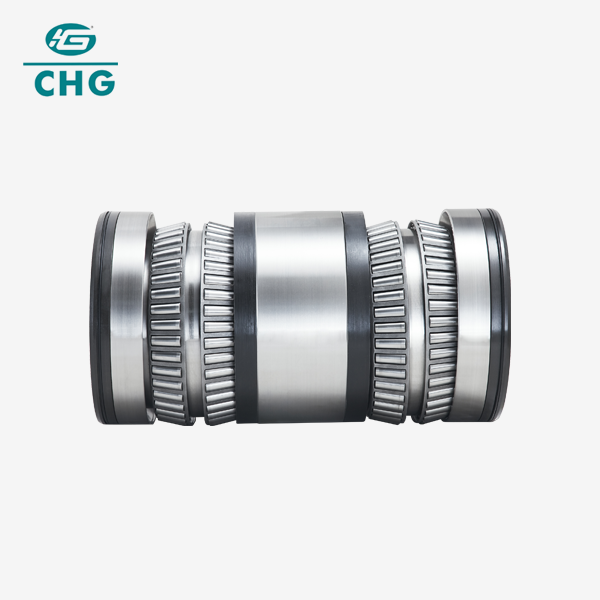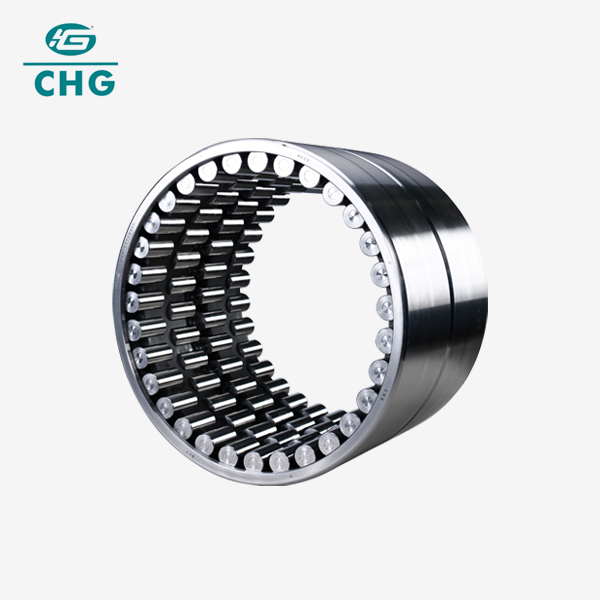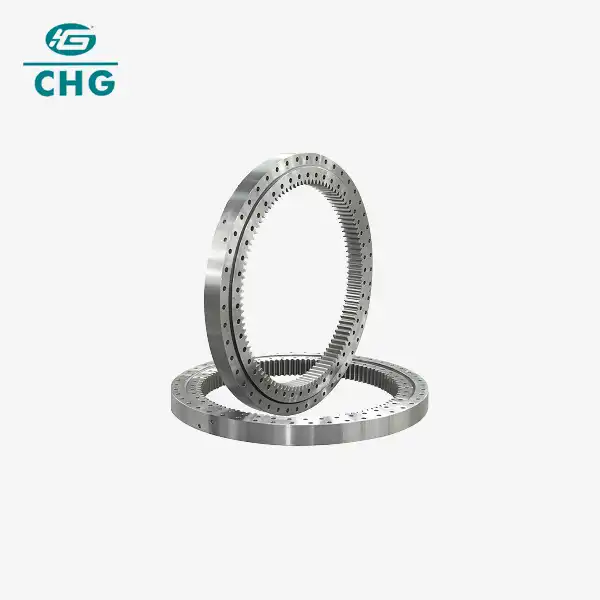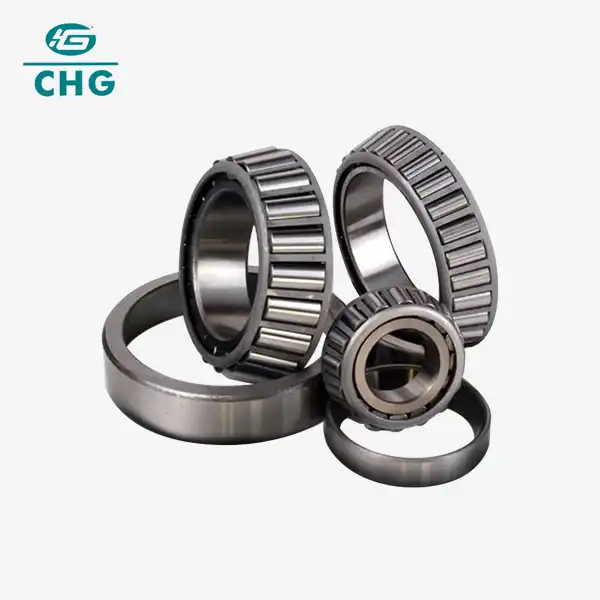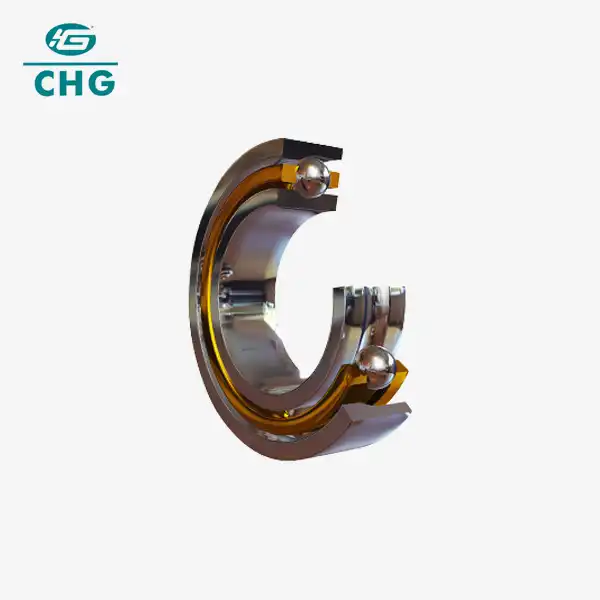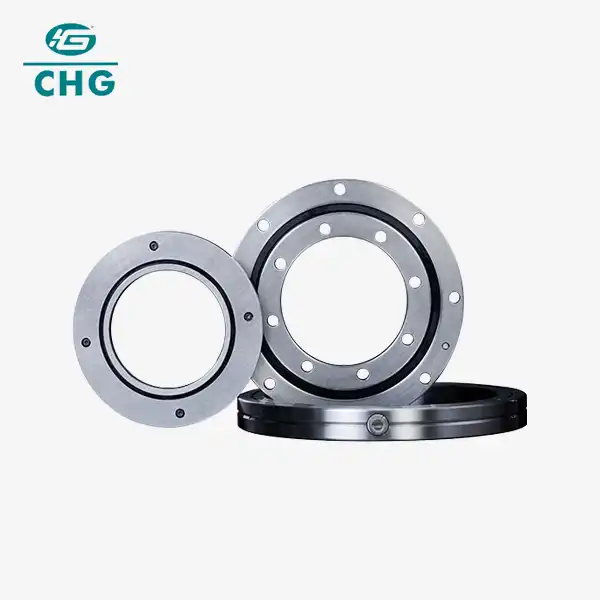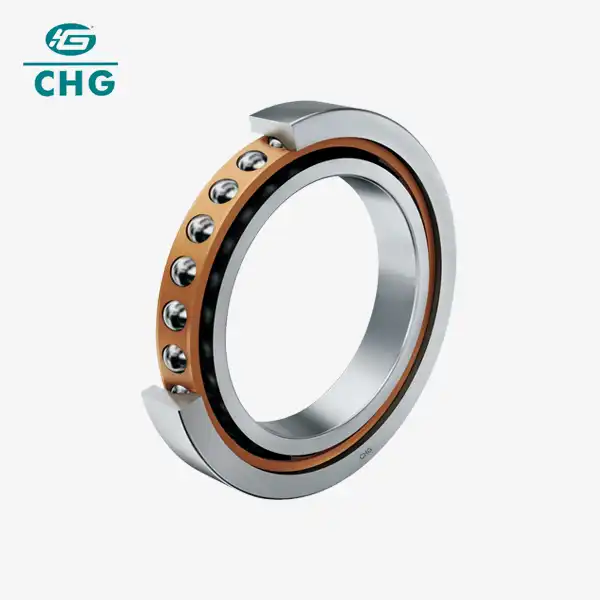What is the Difference Between Double Row and Single Row Tapered Roller Bearings?
Tapered roller bearings are crucial components in many mechanical systems, designed to handle both radial and axial loads effectively. The key distinction between double row and single row tapered roller bearings lies in their structure and load-bearing capabilities. Single row tapered roller bearings consist of a single set of tapered rollers between the inner and outer races, while double row bearings feature two sets of tapered rollers, often in a back-to-back or face-to-face arrangement. This structural difference significantly impacts their performance characteristics, load capacities, and suitability for various applications.
What are the advantages of single row tapered roller bearings?

Single row tapered roller bearings offer several distinct advantages that make them a popular choice in many engineering applications. Their unique design, featuring tapered rollers guided by a rib on the inner ring, provides excellent performance in handling combined radial and axial loads. This capability stems from the angular contact between the rollers and raceways, allowing the bearing to support thrust loads in one direction.
One of the primary advantages of single row tapered roller bearings is their high load-carrying capacity relative to their size. The tapered geometry of the rollers and raceways creates a larger contact area compared to cylindrical or ball bearings of similar dimensions. This increased contact area distributes the load more evenly, reducing stress concentrations and enhancing the bearing's overall load-bearing capacity. As a result, single row tapered roller bearings can support heavier loads than many other bearing types of comparable size, making them ideal for applications where space is limited but load requirements are high.
Another significant advantage is their ability to be adjusted for preload or clearance. This adjustability is crucial in many applications, as it allows engineers to optimize the bearing's performance for specific operating conditions. By adjusting the axial position of the inner ring relative to the outer ring, technicians can set the desired preload or clearance. This feature is particularly valuable in applications where maintaining precise shaft positioning is critical, such as in machine tool spindles or automotive wheel bearings.
Single row tapered roller bearings also excel in their ability to accommodate misalignment to a certain degree. While not as forgiving as some other bearing types like spherical roller bearings, they can handle small amounts of shaft deflection or housing misalignment without significant performance degradation. This characteristic makes them suitable for applications where perfect alignment is challenging to achieve or maintain.
The separability of single row tapered roller bearings is another advantage worth noting. The inner ring with the roller and cage assembly (known as the cone) can be mounted separately from the outer ring (cup). This feature simplifies installation and maintenance procedures, especially in complex machinery where access might be limited. It also allows for easier inspection and replacement of components when necessary.
How does a single row tapered roller bearing work?
Understanding the working principle of a single row tapered roller bearing is crucial for appreciating its unique capabilities and applications in various mechanical systems. At its core, the operation of this bearing type relies on the geometric arrangement of its components and the resulting force distribution under load.
A single row tapered roller bearing consists of four main components: the inner ring (cone), the outer ring (cup), tapered rollers, and a cage. The inner and outer rings have tapered raceways that match the taper of the rollers. This tapered design is the key to the bearing's functionality, allowing it to handle both radial and axial loads effectively.
When the bearing is under load, the tapered rollers are pressed between the inner and outer ring raceways. The angle of the taper is carefully designed to create an optimal contact area between the rollers and raceways. This larger contact area, compared to cylindrical or ball bearings, allows for better load distribution and higher load-carrying capacity.
As the bearing rotates, the rollers move along the raceways in a rolling motion. The cage, also known as the retainer, ensures that the rollers maintain proper spacing and alignment within the bearing. This is crucial for preventing roller-to-roller contact, which could lead to increased friction and wear.
One of the unique aspects of tapered roller bearings is their ability to handle thrust loads. The tapered geometry creates an angular contact between the rollers and raceways. When an axial load is applied, this angular contact generates a wedging action that allows the bearing to support significant thrust loads in one direction. This is why tapered roller bearings are often used in applications where both radial and axial loads are present.
The rib on the inner ring plays a vital role in the bearing's operation. It guides the rollers and prevents them from sliding off the raceway. Additionally, the rib takes up the axial forces generated by the rolling motion of the tapered rollers, contributing to the bearing's thrust load capacity.
The operation of a single row tapered roller bearing also involves careful consideration of lubrication. As the bearing rotates, the lubricant (typically oil or grease) is distributed across the rolling surfaces. The tapered design helps to retain the lubricant within the bearing, ensuring proper lubrication of all critical surfaces. This is essential for reducing friction, preventing wear, and dissipating heat generated during operation.
Temperature management is another important aspect of how these bearings work. During operation, heat is generated due to friction and the work done in supporting the load. The bearing's design allows for effective heat dissipation, with the lubricant playing a crucial role in transferring heat away from the rolling elements and raceways.
One of the unique operational features of single row tapered roller bearings is their adjustability. By altering the axial position of the inner ring relative to the outer ring, it's possible to set a specific preload or operating clearance. This adjustability is crucial in many applications for optimizing performance and compensating for wear over time.
What are the applications of single row tapered roller bearings?
Single row tapered roller bearings find extensive use across a wide range of industries and applications due to their unique combination of high load capacity, ability to handle both radial and axial loads, and adjustability. Their versatility makes them indispensable in many mechanical systems, from heavy industrial machinery to precision instruments.
One of the most prominent applications of single row tapered roller bearings is in the automotive industry. In vehicles, these bearings are crucial components in several systems. They are commonly used in wheel hubs, where they support the vehicle's weight (radial load) and the cornering forces (axial load) experienced during turning. The ability to adjust these bearings is particularly valuable in wheel applications, as it allows for precise control of wheel end play, which is critical for proper wheel alignment and tire wear.
Transmissions and differentials in vehicles also heavily rely on single row tapered roller bearings. In these applications, the bearings support the gear shafts, handling the complex loads generated during power transmission. The high load capacity and ability to withstand shock loads make tapered roller bearings ideal for these demanding environments. Moreover, their capability to operate under high speeds while maintaining precision is crucial for ensuring smooth and efficient power transfer in modern vehicle drivetrains.
In the industrial sector, single row tapered roller bearings play a vital role in various types of machinery. Heavy equipment used in construction and mining, such as excavators, bulldozers, and dump trucks, employ these bearings in their drivetrains, wheel hubs, and articulation joints. The robustness of tapered roller bearings, combined with their ability to handle heavy radial and axial loads, makes them suitable for the harsh operating conditions typically encountered in these applications.
Machine tools represent another significant application area for single row tapered roller bearings. In equipment such as lathes, milling machines, and grinding machines, these bearings are often used to support the main spindles. The high precision and stiffness offered by tapered roller bearings are crucial for maintaining the accuracy of machining operations. Their adjustability allows for fine-tuning of spindle preload, which is essential for achieving the required precision and surface finish in machined parts.
The steel industry also heavily relies on single row tapered roller bearings, particularly in rolling mills. These bearings support the rolls in both hot and cold rolling processes, where they must withstand extremely high loads and operate in challenging environments with exposure to heat, water, and contaminants. The robust design of tapered roller bearings makes them capable of handling the severe radial and axial loads encountered in steel rolling operations.
In the railway industry, single row tapered roller bearings are used extensively in the wheel sets of locomotives and railway cars. These bearings must support the enormous weight of the vehicles while also handling the lateral forces experienced during cornering and track irregularities. The long service life and reliability of tapered roller bearings are particularly valuable in this application, where maintenance intervals are often long and operating conditions are demanding.
The aerospace industry also utilizes single row tapered roller bearings in various applications. They are found in aircraft landing gear, where they must withstand high impact loads during landing and take-off. In helicopter transmissions, these bearings support the main rotor shafts, handling the complex loads generated by rotor operation. The high precision and reliability of tapered roller bearings are critical in aerospace applications, where safety is paramount.
In the energy sector, single row tapered roller bearings play a crucial role in both traditional and renewable energy systems. In wind turbines, for example, these bearings are used in the main shaft, gearbox, and generator. They must operate reliably under varying load conditions and in exposed environments. Similarly, in hydroelectric power plants, tapered roller bearings support turbine shafts, handling the substantial loads generated by water flow.
The paper and printing industry is another area where single row tapered roller bearings find extensive use. In paper mills, these bearings support the rolls in various stages of the papermaking process, from pulp preparation to finishing. The ability of tapered roller bearings to handle both radial and axial loads is particularly valuable in calendar rolls, where precise control of roll positioning is crucial for achieving the desired paper quality.
Agricultural machinery is yet another application area for single row tapered roller bearings. In tractors, harvesters, and other farm equipment, these bearings are used in wheel hubs, transmissions, and various implement attachments. The ability to withstand shock loads and operate in contaminated environments makes tapered roller bearings well-suited for the challenging conditions encountered in agricultural applications.
In summary, the applications of single row tapered roller bearings span a diverse range of industries and mechanical systems. Their unique combination of high load capacity, ability to handle combined loads, adjustability, and reliability makes them an essential component in countless machines and vehicles. From supporting the wheels of high-speed trains to ensuring the precision of cutting-edge machine tools, single row tapered roller bearings continue to play a crucial role in advancing technology and industry.
Luoyang Huigong Bearing Technology Co., Ltd. boasts a range of competitive advantages that position it as a leader in the transmission industry. Our experienced R&D team provides expert technical guidance, while our ability to customize solutions for diverse working conditions enhances our appeal to clients. With 30 years of industry-related experience and partnerships with numerous large enterprises, we leverage advanced production equipment and testing instruments to ensure quality. Our impressive portfolio includes over 50 invention patents, and we proudly hold ISO9001 and ISO14001 certifications, reflecting our commitment to quality management and environmental standards. Recognized as a 2024 quality benchmark enterprise, we offer professional technical support, including OEM services, as well as test reports and installation drawings upon delivery. Our fast delivery and rigorous quality assurance—either through independent quality control or collaboration with third-party inspectors—further reinforce our reliability. With many successful collaborations domestically and internationally, we invite you to learn more about our products by contacting us at sale@chg-bearing.com or calling our hotline at +86-0379-65793878.
References
1. SKF Group. (2021). Tapered roller bearings. SKF.com.
2. Timken Company. (2020). Tapered Roller Bearing Catalog. Timken.com.
3. NSK Ltd. (2019). Roller Bearings. NSK.com.
4. Schaeffler Technologies AG & Co. KG. (2021). Tapered roller bearings. Schaeffler.com.
5. NTN Corporation. (2018). Tapered Roller Bearings. NTN Global.
6. American Bearing Manufacturers Association. (2017). Load Ratings & Fatigue Life for Roller Bearings. ABMA Standards.
7. Hamrock, B. J., & Anderson, W. J. (1983). Rolling-Element Bearings. NASA Reference Publication 1105.
8. Harris, T. A., & Kotzalas, M. N. (2006). Essential Concepts of Bearing Technology (5th ed.). CRC Press.
9. ISO 355:2019. (2019). Rolling bearings — Tapered roller bearings — Boundary dimensions and series designations. International Organization for Standardization.
10. Harnoy, A. (2002). Bearing Design in Machinery: Engineering Tribology and Lubrication. CRC Press.

